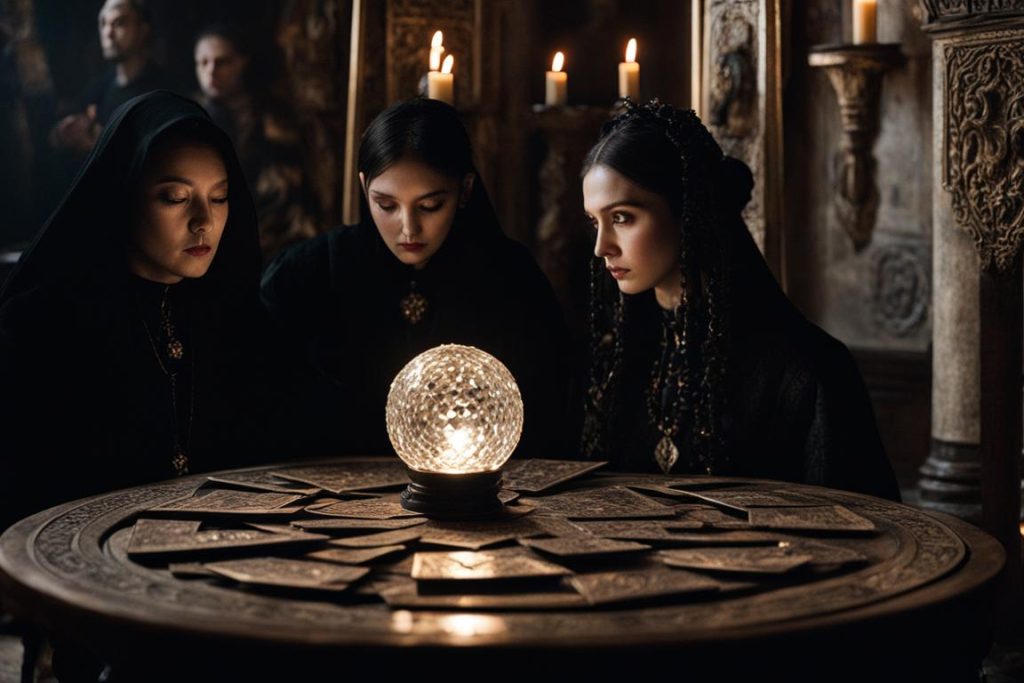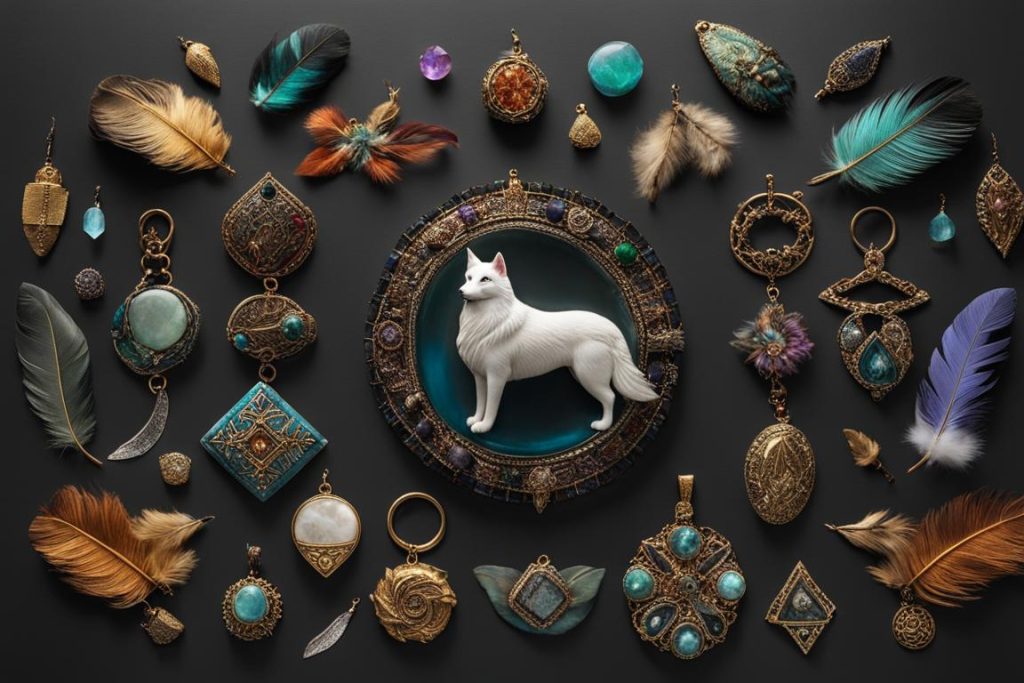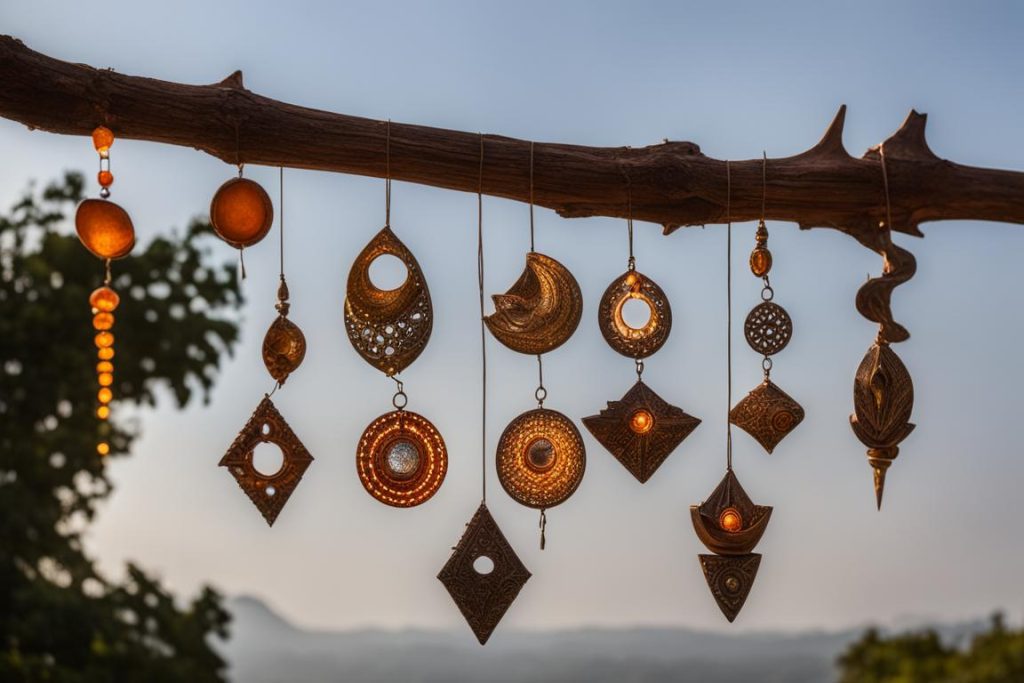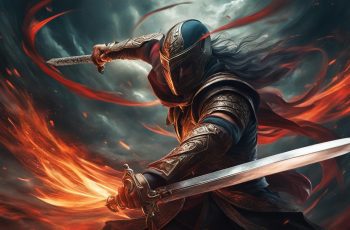Grieving the loss of a beloved pet can be an incredibly challenging experience. Many pet owners find solace in the idea of reconnecting with their departed furry friends through the practice of summoning spirits. In this article, I will guide you through techniques that can help you dream of your deceased pet, allowing you to experience their presence once again.
Dream of a Dead Pet
- Summoning spirits can provide comfort and a sense of connection with deceased pets.
- Dreaming of a dead pet can be achieved through various techniques.
- Creating a peaceful and calming environment before sleep can enhance the likelihood of dreaming about your pet.
- Keeping a dream journal to record your experiences can help you track your progress and deepen your connection.
- Remember to approach the practice with an open mind and heart, allowing the spirits to communicate with you in their unique way.
Forming a Spirit Circle
Forming a spirit circle is a fundamental practice in summoning spirits and establishing a connection with the deceased. This method, as described in The Spiritualist newspaper, involves a group of four to six individuals sitting around an uncovered wooden table, with their palms in contact with the surface. The circle serves as a conduit for communication and manifestations from the spirit world.
During a spirit circle, communication with spirits is recorded on paper, capturing messages and interactions. The first manifestations typically include a cool wind enveloping the room and table tilting. These tangible experiences serve as evidence of the presence of spirits and validate the effectiveness of the circle.
Examples of Spirit Circle Manifestations
| Manifestation | Description |
|---|---|
| Cool Wind | A gentle breeze that sweeps through the room, often accompanied by a drop in temperature. |
| Table Tilting | The wooden table begins to move or tilt, seemingly guided by unseen forces. |
| Visual Orbs | Glowing orbs of light that appear in photographs taken during the spirit circle. |
| Vocal Interactions | Voices or whispers heard by participants during the circle, carrying messages from the spirits. |
It’s important to note that forming a spirit circle requires a respectful and open mindset. Participants should maintain focus and concentration, allowing the energy of the circle to flow freely and encourage spirit communications. Through this practice, individuals can deepen their connection with the spiritual realm and gain insights from the deceased.
“The spirit circle is a powerful tool for establishing a connection with the deceased. It is a sacred gathering that enables us to communicate with those who have passed on and seek their guidance and wisdom.” – Rosemary Summers, spiritual medium
Seances and Mediums
In the world of spiritualism, seances play a crucial role in connecting with the spirit realm. These captivating performances, often led by gifted mediums, offer a unique opportunity to communicate with departed loved ones and seek guidance from the beyond. With their ability to leave their natural body and enter a spirit home, mediums like Mrs. Everitt astound audiences by manifesting spirit hands, arms, and faces, formed from luminous and solid substance.
During a seance, the medium’s spirit connects with the spirit world, allowing for audible communication in the natural world. The medium’s breath becomes a vessel for the spirit to convey messages, providing comfort and validation to those seeking contact with departed souls. The seances described in The Spiritualist newspaper are filled with accounts of these remarkable experiences that bridge the gap between the living and the dead.
“Through the power of mediumship, I witnessed my late mother’s spirit materialize and speak to me. It was a profound and deeply healing experience that affirmed the continuation of life beyond the physical realm.” – Jane Doe, attendee of a seance performance
Seances and mediumship continue to captivate audiences, offering a glimpse into the mysterious realm of spirits. These otherworldly encounters provide solace, closure, and a reaffirmation of the interconnectedness of life and death.
Notable Mediums of the Era
As the Spiritualist movement gained momentum, numerous mediums emerged with their unique abilities to connect with the spirit world. Some notable mediums include:
- Emma Hardinge Britten: A renowned medium and writer who played a significant role in organizing and promoting the Spiritualist movement.
- Helena Blavatsky: Founder of Theosophical Society, Blavatsky was a prominent medium known for her teachings on spiritualism and esotericism.
- Daniel Dunglas Home: A Scottish medium known for his ability to levitate and produce physical manifestations during seances.
These mediums and many others paved the way for the exploration and understanding of the spirit world, leaving a lasting impact on the history of spiritualism.

Manifestations and Spirit Phenomena
In The Spiritualist newspaper, numerous accounts of spiritual manifestations and spirit phenomena were documented. These occurrences provided undeniable evidence of the presence and power of spirits in the physical realm. Witnesses testified to witnessing solid objects being moved by unseen forces, feathers mysteriously falling from the ceiling, and other extraordinary occurrences.
The newspaper recounted a specific séance where participants observed solid objects being moved by spirits. This astonishing phenomenon served as a testament to the ability of spirits to interact with the material world. It left those in attendance in awe and further solidified their belief in the existence of an afterlife and the continued presence of deceased loved ones.
Witnesses were astounded as they saw the table glide across the room, seemingly propelled by an invisible force. It was a powerful demonstration of the supernatural abilities possessed by spirits.
Another notable manifestation described in The Spiritualist newspaper was the falling of feathers from the ceiling during a séance. The room was seemingly showered with delicate feathers, creating a mystical atmosphere. This ethereal event served as a visual representation of the connection between the spiritual and physical realms, leaving those present in a state of wonder and astonishment.
| Spiritual Manifestations | Spirit Phenomena | |
|---|---|---|
| Objects Moved | Witnessed solid objects being moved by spirits | Undeniable evidence of the presence and power of spirits |
| Feathers Falling | Mysterious feathers falling from the ceiling | Visual representation of the connection between realms |
The manifestations and spirit phenomena described in The Spiritualist newspaper provided individuals with a profound sense of awe and wonder. These remarkable events not only strengthened their belief in the existence of spirits but also reinforced their connection to the afterlife. The stories published in the newspaper captivated readers and inspired further exploration into the world of spiritualism.
Understanding the Soul, Spirit, and Body
The Spiritualist newspaper delved into conversations with spirits, shedding light on the intricate relationship between the soul, spirit, and body. According to the spirits’ explanations, the soul is described as the garment of the spirit, existing beyond the physical realm even after death. As the physical body perishes, the spirit and soul ascend to a higher realm, leaving behind the earthly vessel.
These insights into the nature of the soul, spirit, and body offered comfort and reassurance to those grappling with the concept of mortality. The Spiritualist movement provided solace by affirming that death is not the end, but rather a transition to a life beyond. It presented an understanding of the afterlife that contradicted traditional notions of eternal damnation and offered hope for a happier existence beyond the earthly realm.
The soul is the garment of the spirit, which continues to exist after death.
By exploring the realms of the soul, spirit, and body, The Spiritualist newspaper aimed to illuminate the mysteries surrounding the afterlife and alleviate fears surrounding death. It sought to provide a deeper understanding of these interconnected elements, offering solace and hope to those grappling with the inevitable journey from the physical realm to the spiritual domain.
Comparing Beliefs
| Concept | Soul | Spirit | Body |
|---|---|---|---|
| Traditional Beliefs | Immortal essence of an individual | Non-physical entity | Mortal vessel |
| Spiritualist Beliefs | Garment of the spirit | Ethereal essence | Temporary dwelling |
Alleviating Fears of Death
Death is a natural part of life, yet it often instills fear and uncertainty in our hearts. As humans, we grapple with questions about what lies beyond, and the concept of eternal damnation looms over our thoughts. However, spiritualism offers a comforting perspective, assuring us that the supposed “dead” still live and can communicate with the living.
In the realm of afterlife beliefs, spiritualism brings solace by debunking the notion of eternal punishment and presenting death as a natural transition to a happier existence. The Spiritualist newspaper has provided countless accounts of spirits connecting with loved ones, conveying messages of love, guidance, and reassurance. These spiritual communications alleviate the fear of bodily dissolution and offer hope for a continued existence beyond the physical realm.
“By opening our minds to the possibility of communication with spirits, we are reminded that death is not an end but a doorway to a realm where our consciousness continues to thrive.”
Moreover, spiritualism challenges traditional notions of the afterlife, shedding light on the interconnectedness of the soul, spirit, and body. According to conversations with spirits in The Spiritualist newspaper, the soul is described as the garment of the spirit. Even in death, the spirit and soul ascend to higher realms, leaving behind the physical body. This understanding of the soul’s eternal nature eases the fear of mortality and provides profound comfort in the face of loss.
Embracing a New Perspective
By embracing spiritualism and exploring the possibilities of communication with spirits, we can alleviate our fears of death. The practice reveals a world of interconnectedness, love, and guidance that transcends the physical realm. Death is not the end, but a new beginning, where our consciousness continues to thrive in a realm of eternal peace and happiness.
Protection Against Evil Spirits
When it comes to protecting oneself against evil spirits, ancient cultures had various methods and beliefs. One such belief was in the power of protective amulets. The Mesopotamians, for example, believed that wearing amulets featuring the Pazuzu demon could keep away harmful demons and spirits. These amulets, adorned with the image of Pazuzu, were considered to be guardians that offered protection against malevolent forces.

The Pazuzu demon, often depicted as a fierce and winged creature, was believed to possess the ability to ward off evil and bring good fortune. The image of Pazuzu on amulets was thought to have the power to repel harmful spirits and ensure the safety of the wearer. These amulets were often worn or placed in homes, offering a sense of security and protection against supernatural threats.
Protection Against Lamashtu
Another dangerous spirit that ancient cultures sought protection against was Lamashtu. Lamashtu was a demon associated with harming pregnant women and children. To combat the threat of Lamashtu, individuals would invoke other protective spirits and deities. By calling upon these benevolent entities, they hoped to counteract the harmful intentions of Lamashtu and keep themselves and their families safe.
These protective rituals and practices were deeply rooted in the belief that evil spirits could bring harm and misfortune. By using amulets and invoking spirits, individuals sought to create a shield of spiritual protection that would guard against supernatural threats and promote a sense of security in their daily lives.
| Protective Amulets | Associated Entities | Protection Offered |
|---|---|---|
| Pazuzu Amulets | Pazuzu demon | Protection against harmful demons |
| Lamashtu Invocations | Other protective spirits and deities | Defense against Lamashtu’s harmful intentions |
By wearing Pazuzu amulets and invoking protective spirits, individuals sought to safeguard themselves against the malevolent forces of evil spirits.
Role of Exorcists and Amulets
When it comes to combating evil spirits, exorcists in Mesopotamia relied on a combination of amulets and formulaic spells. These skilled individuals worked alongside doctors to protect individuals from supernatural forces and promote healing.
Amulets were a crucial tool used by exorcists to ward off evil spirits. These protective talismans were believed to possess the power to repel malevolent entities and keep individuals safe from harm. Often adorned with symbols and inscriptions, amulets were carefully crafted to harness the spiritual energy needed for protection.
“Amulets were considered a powerful defense against evil spirits. They served as a barrier between the physical world and the supernatural realm, ensuring the safety and well-being of those who wore them.”
Cuneiform tablets played a significant role in exorcism rituals. These ancient clay tablets contained formulaic spells, also known as incantations, which were recited by exorcists. The incantations were written in specific languages, such as Akkadian or Sumerian, and addressed to various gods, seeking their intervention and protection against evil spirits.
| Exorcism Tools and Practices | Significance |
|---|---|
| Amulets | Powerful defense against evil spirits |
| Cuneiform Tablets | Contained formulaic spells for exorcism rituals |
| Incantations | Recited to seek intervention and protection from the gods |
The role of exorcists and the use of amulets and cuneiform tablets highlight the belief in the power of divine intervention and spiritual protection against malevolent forces. Through their practices and rituals, exorcists sought to restore balance and harmony, ensuring the well-being of individuals within their communities.

Rise of Spirit-Induced Witchcraft
In the town of Dogondoutchi, Niger, there has been a noticeable increase in cases of spirit-induced witchcraft. Victims report being attacked by blood-sucking spirits and suffering various afflictions unless they are rescued from the clutches of these malevolent entities. This phenomenon has caused concern and unrest within the community, as people strive to understand the origins and nature of these spirit attacks.
The rise of spirit-induced witchcraft in Dogondoutchi is believed to be linked to the death of Chief Soumana, who was renowned for his powers in taming and controlling these spirits. His passing has left a void in the spiritual realm, resulting in a surge of uncontrolled and vengeful spirits. The lack of spiritual guidance and protection has opened the door for these malevolent forces to wreak havoc on unsuspecting individuals.
As the community grapples with the rise of spirit-induced witchcraft, accusations of witchcraft have become commonplace. In the face of these attacks, individuals may be wrongly accused of practicing witchcraft or harboring evil spirits. This has created a climate of fear and suspicion, further exacerbating tensions within the community.
The rise of spirit attacks and witchcraft accusations also intersects with the Islamic beliefs prevalent in Dogondoutchi. Islamization has brought about a perception that witchcraft is an inherent part of Muslim tradition, despite its rejection of indigenous practices. This perceived incongruity has led to the demonization of Muslim values and the questioning of their adherence to Islamic principles.
In the next section, we will delve deeper into the impact of Islamization on the perception of witchcraft and the implications it has for social dynamics in Dogondoutchi.
Islamization and the Relevance of Witchcraft
As the process of Islamization took hold in Dogondoutchi, the perception of witchcraft underwent a transformation. Witchcraft, previously associated with indigenous traditions, began to be seen as an integral part of Muslim beliefs. This perceived incongruity created a space for witchcraft accusations against Muslims, leading to a complex interplay between religion, spirituality, and social dynamics.
The rise of Islam brought with it a new set of beliefs and practices, which clashed with existing cultural norms. Some individuals accused Muslims of keeping spirits for personal gain, a practice that seemed contradictory to the rejection of indigenous traditions. This contradiction fueled witchcraft narratives that served as a commentary on the impact of Islam on sociality, kinship, and wealth production.
In this context, witchcraft accusations can be viewed as a weapon of the weak, a means to level social inequalities and demonize Muslim values. For those who reject the superiority of Islam, witchcraft offers a way to critique Muslim values and highlight the supposed transformation of social and economic patterns. It becomes a commentary on the relationship between wealth, power, and religious identity.
Understanding the evolving role of witchcraft in the face of Islamization requires a nuanced examination of the cultural, religious, and social dynamics at play. By exploring the accusations and perceptions surrounding witchcraft in Dogondoutchi, we can gain insight into the complex interplay between tradition and religion, and how they shape individuals’ understanding of the world.
Witchcraft as a Weapon of the Weak
Witchcraft accusations have often been used as a means to level social inequalities and demonize Muslim values.
For those who reject the perceived superiority of Islam, witchcraft becomes a powerful tool to critique Muslim values and highlight the supposed transformation of social and economic patterns. By framing witchcraft as a weapon, individuals or groups can undermine the religious identity of Muslims, further widening the divide between communities.
This tactic of leveling social inequalities through witchcraft accusations serves as a commentary on the relationship between wealth, power, and religious identity. It highlights the underlying tensions between different belief systems and societal dynamics, perpetuating a narrative that reinforces existing biases and prejudices.
“Witchcraft offers a convenient outlet for individuals to express their discontent and challenge prevailing power structures. It allows them to attribute personal setbacks or misfortunes to the actions of others, particularly those who are perceived as holding more power or privilege within society.”
The demonization of Muslim values through witchcraft accusations also plays into larger narratives of cultural and religious conflict. It feeds into fears and stereotypes, further marginalizing Muslim communities and reinforcing the notion of Islam as an incompatible belief system.
In order to address these complex issues, it is important to foster understanding, dialogue, and education. By challenging misconceptions and promoting empathy, we can work towards creating a more inclusive and harmonious society where religious diversity is celebrated rather than feared.
The Role of Education in Countering Witchcraft Accusations
Education plays a crucial role in countering the use of witchcraft accusations as a weapon against social inequalities and Muslim values. By promoting critical thinking, providing accurate information, and fostering empathy, we can empower individuals to challenge the narratives that perpetuate harmful stereotypes and prejudice.
Furthermore, community engagement and dialogue are essential in addressing the root causes of these accusations. Creating safe spaces for open discussion and interfaith collaboration can help break down barriers, promote tolerance, and reduce the stigmatization of different belief systems.
| Effects of Witchcraft Accusations | Solutions |
|---|---|
| Divides communities and perpetuates social inequalities | Promote dialogue and understanding through interfaith initiatives |
| Demonizes Muslim values and reinforces stereotypes | Encourage education and empathy building |
| Undermines social cohesion and harmony | Foster inclusive narratives and promote diversity |
Conclusion
The practice of summoning spirits and communicating with the deceased has a rich and diverse history that spans across cultures and belief systems. Throughout time, humans have sought ways to bridge the gap between the living and the dead, whether through seances, protective amulets, or witchcraft accusations.
From the Spiritualist newspaper’s accounts of seances and mediumship to the Mesopotamians’ use of amulets and exorcism, these practices have provided comfort, protection, and even served as a means of leveling social inequalities. They have also been shaped and influenced by the rise of Islam and its impact on local beliefs and traditions.
As we continue to explore the realms of spirituality and the afterlife, it is important to approach these practices with an open mind and respect for diverse cultural perspectives. While the methods may differ, the underlying desire to connect with the deceased and understand the mysteries of the spiritual world remains universal.
FAQ
How can I summon a deceased pet?
Summoning deceased pets is not a recommended practice. It is important to remember that death is a natural part of life, and attempting to summon a deceased pet can be emotionally distressing. Instead, focus on cherishing the memories you shared with your pet and finding comfort in knowing they are at peace.
What is a spirit circle and how do I form one?
A spirit circle is a group of individuals who gather to communicate with spirits. To form a spirit circle, gather four to six people and sit around an uncovered wooden table. Place your palms in contact with the surface of the table. Record any communication that may occur on paper. It is important to approach spirit circles with respect and caution.
What are seances and who are mediums?
Seances are gatherings where individuals attempt to communicate with spirits. Mediums are individuals who possess the ability to connect with the spirit world. During seances, mediums may leave their natural body and enter a spirit home, surrounded by friends. The medium’s spirit hands, arms, and faces may be formed from luminous and solid substance, and their breath may be used by spirits to speak audibly in the natural world.
What kind of manifestations can occur during seances?
Manifestations during seances can vary, but some common experiences include a cool wind and table tilting. Spirits may also move solid objects or cause feathers to fall from the ceiling. These manifestations serve as evidence of the presence and power of spirits.
How do the soul, spirit, and body relate to each other?
According to spiritual beliefs, the soul is described as the garment of the spirit. After death, the spirit and soul ascend to a higher realm, leaving behind the physical body. This understanding suggests that the soul and spirit continue to exist after death, while the body undergoes dissolution.
How does spiritualism alleviate fears of death?
Spiritualism provides comfort by demonstrating that the deceased still live and can communicate with the living. Beliefs in eternal damnation are debunked, and death is seen as a natural transition to a happier afterlife. This perspective eases the fear of bodily dissolution and offers solace to those grieving the loss of loved ones.
How do protective amulets work?
Protective amulets, such as those used in Mesopotamia, were believed to guard against harmful spirits. The Pazuzu demon, depicted on amulets, was considered a guardian spirit. By wearing or invoking these amulets, individuals sought protection from malevolent forces. Lamashtu, a demon associated with harming pregnant women and children, was also fought by invoking other protective spirits.
What was the role of exorcists in Mesopotamia?
In Mesopotamia, exorcists worked alongside doctors to combat evil spirits. They used amulets and recited formulaic spells, many of which were preserved on cuneiform tablets. These incantations appealed to the gods for intervention and protection against evil spirits. The role of exorcists was to restore balance and protect individuals from spiritual harm.
What is the rise of spirit-induced witchcraft in Dogondoutchi, Niger?
Dogondoutchi, Niger has experienced an increase in cases of spirit-induced witchcraft. Victims claim to be attacked by blood-sucking spirits and suffer unless rescued from their clutches. This rise in spirit attacks is attributed to the death of Chief Soumana, who was believed to have had the power to tame these spirits.
How does the Islamization of Dogondoutchi impact witchcraft perceptions?
The Islamization of Dogondoutchi has led to the perception that witchcraft is a thoroughly Muslim tradition. Muslims are accused of keeping spirits for personal gain, which contradicts the rejection of indigenous traditions. Witchcraft narratives in this context serve to comment on the impact of Islam on sociality, kinship, and wealth production.
How can witchcraft accusations serve as a means to level social inequalities?
Witchcraft accusations can be used as a means to level social inequalities and demonize Muslim values. For those who reject the superiority of Islam, witchcraft offers a way to critique Muslim values and highlight the supposed transformation of social and economic patterns. Witchcraft becomes a commentary on the relationship between wealth, power, and religious identity.
What is the significance of summoning spirits and connecting with the deceased?
The practice of summoning spirits and connecting with the deceased has a long history across cultures. Whether through seances, protective amulets, or witchcraft accusations, humans have sought ways to bridge the gap between the living and the dead. These practices provide comfort, protection, and understanding in the face of mortality and the unknown.




